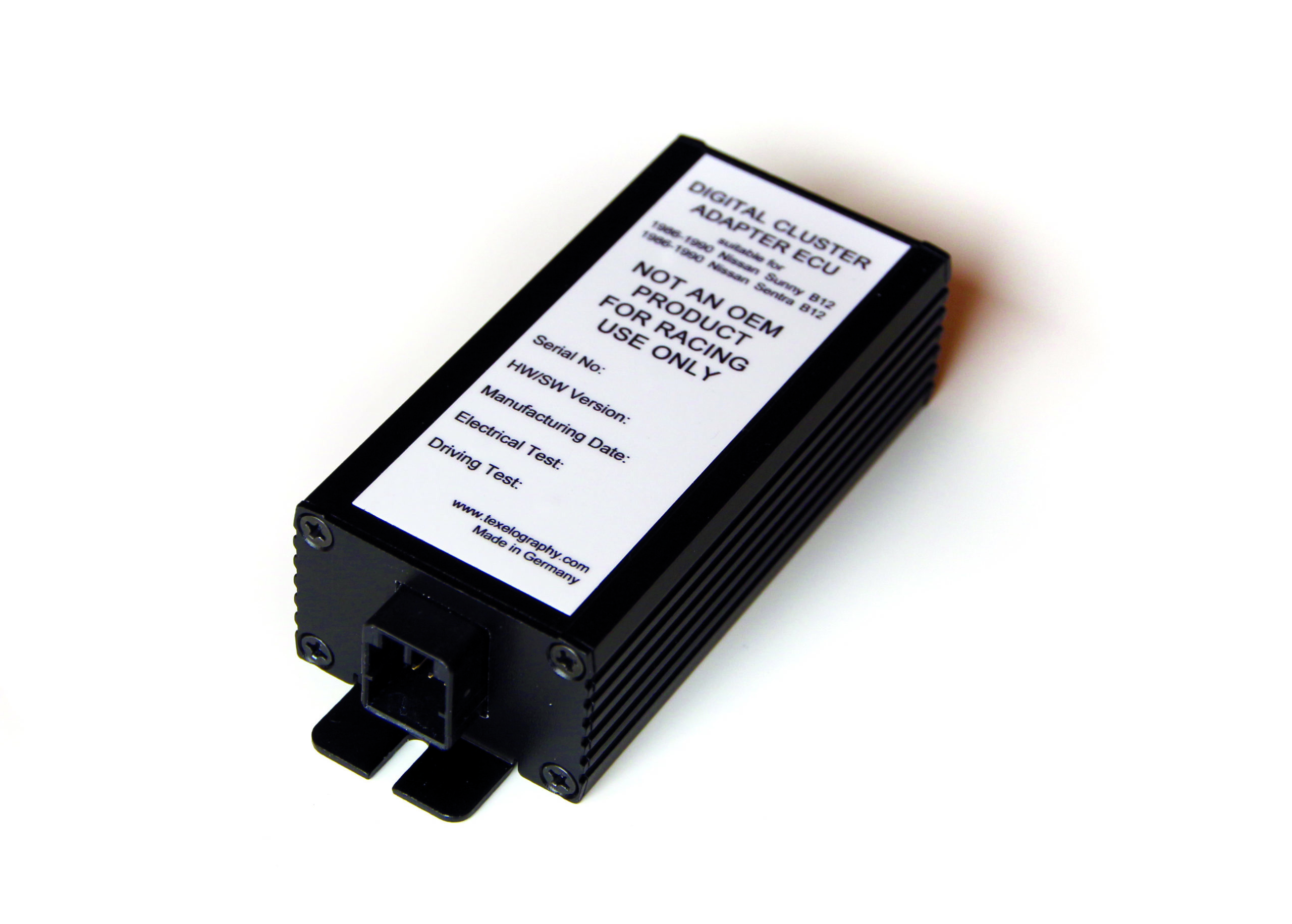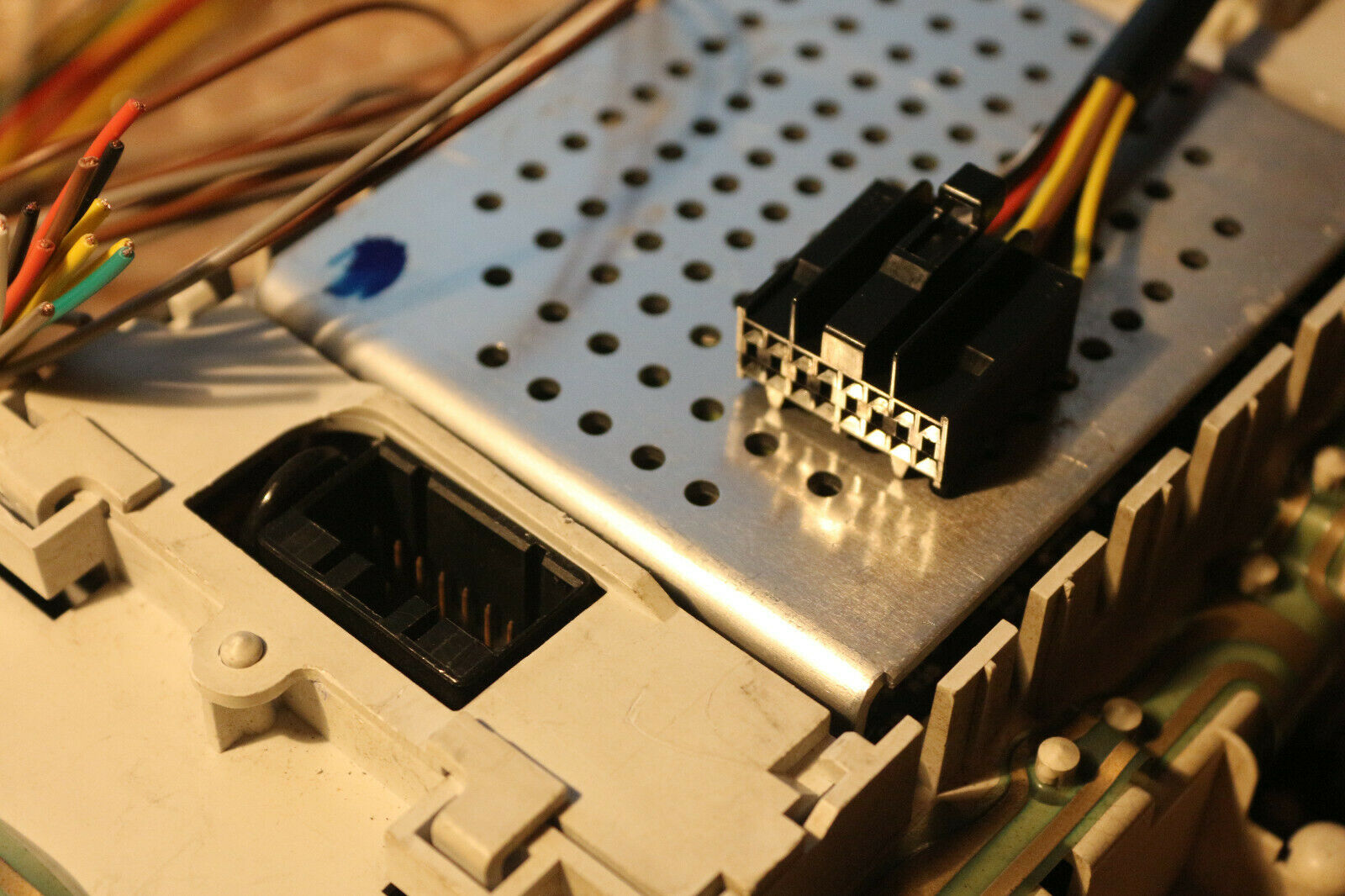Today I would like to share some exciting news for you, and make it official – I am building a converter to allow you to fit a digital cluster into your eighties oldschool vintage car!
In the last few months, I published details on how the digital cluster in a Nissan Sunny B12 Rz-1 works, and how it is integrated into the vehicle electronics. Well knowing that even with the information available, most owners of these old cars would not be able to do the job themselves, I decided to start building an adapter.
So how’s the idea?
Having solved all the big questionmarks around the digital cluster was not sufficient. From knowing how the speed sensor signal looks like (0-5V PWM), or how the fuel sensor of the digital cluster works, to have a digital cluster successfully installed in your car, is a long way to go. That’s why I decided to build you guys a simple, plug-and-play conversion. The idea is that with my kit you just install a different speed sensor, attach my harness to the one already installed in the car, and connect it to your digital cluster. No hassle, no removal of the dashboard, no cutting of wires, no soldering.

The heart of the conversion is a little, custom made ECU based on an STM32 microcontroller. This chip will do the math, and adapt the signals that we provide to it to a format that the original Sunny Rz1 digital cluster will understand. It will basically work as a translator between the electrical signals of your car and the digital cluster.
That solution means that you don’t have to bother anymore to find a Nissan Rz1 JDM digital speed sensor or aquire a fuel level sensor from a model with a digital dash – if you own these parts, consider yourself lucky, as these are pretty much Unobtanium.
In more detail, the ECU will convert the vehicle speed signal from a sensor that fits mechanically onto the Rz1 transmission (see the black round thingy in the picture). It gives out 4 pulses per rotation – but the digital cluster needs 24 pulses per rotation! To solve this, the ECU is constantly monitoring the frequency of the vehicle speed sensor, and multiplies this frequency by 8 – and then gives this signal to the digital cluster.
For the fuel signal, the ECU does a similar job: A ADC (analog-digital-converter) measures the fuel quantity in your car, and uses a lookup table to calculate the fuel output level. Say for example, the analog fuel sensor measures 50Ohms, then the ECU knows that this corresponds to a fuel level of 30%. Using the lookup table of the digital cluster, it then translates this fuel level to a voltage: Say that 30% means a fuel signal of 2.1V, then the ECU will provide a 2.1V signal to the cluster, which will then display the correct fuel quantity of 30%.
Some geeky technical details — the STM32 has 256k flash and 64k RAM. The application uses a FreeRTOS operating system. Four different tasks manage the signal conversion, and a serial UART interface allows you to print debug information or change settings. The conversion factors and lookup tables are stored in a data flash.
But having an ECU to convert the signals is not enough, as it would still mean that you would have to spend hours and hours removing your vehicles’ dashboard, cluster, harness, cut wires, solder, measure… it can easily take several weeks to accomplish this. I asked myself, how is it possible to make the installation as easy as possible, so that basically everyone can do it?
The idea that popped into my mind was to build an adapter wire harness, which plugs into the OEM harness, and changes the pinout. On the other side of the adapter harness, you can directly connect your cluster. The biggest obstacle here is that the cluster connectors in the Rz1 are 30 years old, and there’s no place on earth were you can buy a matching female connector. I searched for days. You just can’t.
So that basically means that if you want to install a digital cluster, you have to cut off the original connectors, and solder everything together?
You don’t.

After giving up searching a suitable connector that plugs into the OEM harness, I decided to build my own. Above is the CAD drawing of it, and if you scroll all the way up to the picture, you can see the 3D printed result cases. Take two more custom-made electrical PCB circuits and a strain relief, and voilà – your custom made electrical connector is completed!
The custom made PCB will serve as the electrical connection. The cables are soldered to the PCB, and then slid into the 3D printed case, where they are secured. The connector can directly connect to the Rz1 harness, without any cutting required! Compare the gray plug cases with the electrical connector that came from a junkyard Sunny B12 – they will perfectly lign up.
The adapter is now in the late stages of development. The custom plugs are made, the PCB layout for the ECU is done, the software is about 80% complete, next up follows making a prototype and a test installation in a Nissan Rz1. After extensive testing, I hope I can offer you this adapter for sale within one or two month.
What will it cost?
Considering the effort that it took to write the code, design PCBs, the costs for custom PCBs and 3D printing, doing all the research on the Rz1 digital wire harness, measuring out a complete Rz1 harness from Russia, and trying out a lot of different approaches, development of this adapter had cost me a lot. The fact that the number of potential buyers will certainly be less than ten, will not help me a lot either. I am targeting a sales price of roughly 450€ per complete converter, including speed sensor, adapter harness, and custom made ECU. If you are on a tight budget, all the schematics and drawings will be published after the project was completed, so that you can also build everything yourself.
That being said, thank you for reading and the interest! Have fun keeping your old cars on the road, and make sure to come back regularly to find out about updates on this project!
By the way, for all the software guys and girls among you, feel free to check out my GitHub, you will find the complete source code for the adapter there. I will probably do another blog post which focusses only on the software parts, so stay tuned!


